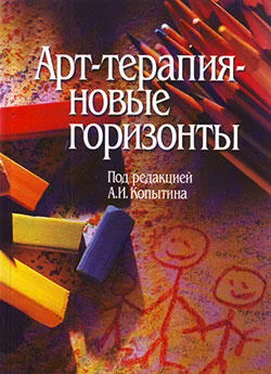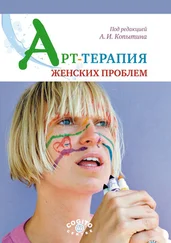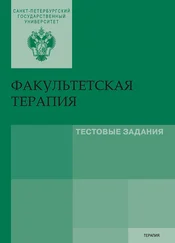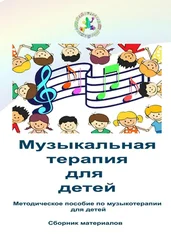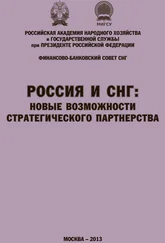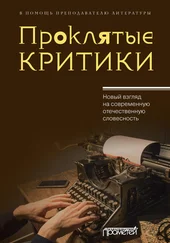Заключение
Нейропсихология предоставляет нам сведения о том, как психика и тело реагируют на стресс, травмы, болезни и другие события. Она также позволяет объяснить, как образы влияют на эмоциональную сферу, мышление и состояние здоровья человека, и понять, каким образом визуальный и сенсорный материал, предоставляемый изобразительной деятельностью, должен быть интегрирован в процесс лечения. Нейропсихология дает возможность обосновать многие современные подходы к арт-терапии, упоминаемые в этой статье. Так, например, ряд представлений теории объектных отношений может быть осмыслен через теорию привязанности, а положения когнитивно-бихевиорального подхода дополнены новыми данными, касающимися механизмов формирования образов и физиологии эмоций.
Нейропсихологические исследования могут привести к пересмотру (Kaplan, 2000) роли арт-терапии в лечении эмоциональных и соматических расстройств. По мере развития нейропсихологии и психосоматических теорий мы, вне всяких сомнений, сможем лучше понять, какое воздействие оказывает изобразительная деятельность на индивидов, переживающих эмоциональный и физический дистресс, и почему визуальные образы и их создание столь важны для исцеления и сохранения психического и физического благополучия.
Литература
Ader R. Psychoneuroimmunology. (3rd ed.). New York: Academic Press, 2001.
Anand S., Anand V. An therapy with laryngectomy patients // Medical art therapy with adults / Ed. by C. Malchiodi. London: Jessica Kingsley, 1999. P. 63–85.
Bach S. Life paints its own span. Zurich: Daimon, 1990.
Baron P. Fighting cancer with images // Advances in art therapy / Ed. by H. Wadeson. New York: Wiley and Sons, 1989. P. 148–168 Benson H. The relaxation response. New York: Avon, 1975.
Benson H. Timeless healing: The power and biology of belief. New York: Scribner, 1996.
Bowlby J. Attachment. New York: Basik Books, 1969.
Damasio A. Descarte’s error. New York: Putnam, 1994.
Damasio A. The feeling of what happens. New York: Harcourt, 1999.
Goleman D. Emotional intelligence. New York: Bantam Books, 1994.
Gabriels R. Treating children with asthma: A creative approach // Medical art therapy with children / Ed. by C. Malchiodi. London: Jessica Kinsley, 1999. P. 95–111 Gross J., Hayncs H. Drawing facilitates children’s verbal reports of emotional laden events // Journal of Experimental Psychology. 1998. 4. P. 163–179.
Hiltebrand E. Coping with cancer through image manipulation // Medical art therapy with adults / Ed. by C. Malchiodi. London: Jessica Kingsley, 1999. P. 113–135
Kaplan F. Brain, science and art therapy: Repainting the picture. London: Jessica Kingsley, 2000.
Levine P. Waking the tiger. Berkeley, CA: North Atlantic, 1997.
Lusebrink V.B. Imagery and visual expression in therapy. New York: Plenum, 1990.
Malchiodi C.A. Breaking the silence: Art therapy with children from violent homes. New York: Brunner/Mazel, 1990.
Malchiodi C.A. Art and medicine // Art Therapy: Journal of the American Art Therapy Association. 1993. 10(2). P. 66–69.
Malchiodi C.A. Art making as complementary medicine // Unpublished syllabus, 26th Annual Conference of the American Art Therapy Association. San Diego, CA, 1995.
Malchiodi C.A. Medical art therapy with adults. London: Jessika Kingsley, 1999a.
Malchiodi C.A. Understanding somatic and spiritual aspects of children’s art expression // Medical art therapy with children / Ed. by C. Malchiodi. London: Jessica Kingsley, 1999b. P. 173–195
Malchiodi C.A. Using drawings as intervention with traumatized children // Trauma and Loss: Research and Interventions. 2001. 7(1). P. 21–27.
Malchiodi C.A., Riley S., Hass-Cohen N. Toward an integrated art therapy mind-body landscape [Audiotape #108–1525]. Denver. CO: National Audio Video, 2001.
National Center for Complemenum & Alternative Medicine. Major domains of complementary and alternative medicine. Washington. DC: NCCAM, 2002.
National Institute for Health. Alternative medicine: Expanding Medical Horizons. Washington, DC: US Government Printing Office. 1994. #94–066.
Ramachandran V. Phantom of the brain. New York: Quill, 1999.
Riley S. Group process made visible. York: Brunner-Routledge, 2001.
Rothchild B. The body remembers: The psychophysiology of trauma and trauma treatment. New York; Norton, 2000.
Rosner-David I., Illusorio S. Tuberculosis: Art therapy with patients in isolation // Art Therapy: Journal of the American Art Therapy Association. 1991. 12(1). P. 24–31.
Sapolsky R. Why Zebras don’t get ulcers. New York: Freeman, 1998.
Schore A. Affect regulation and the origin of the self. Hillsdale, NJ; Lawrence Erlbaum, 1994.
Siegel D.J. The developing mind: Towards u neurobiology of interpersonal experience. New York: Guilford, 1999.
Sourkes B. Tnith to life: Art therapy with pediatric oncology patients and their Siblings // Journal of Psychosocial Oncology. 1991. 9(2). P. 81–96.
Springer S., Deulsch G. Left brain, right brain (3rd ed.). New York: W.K. Freeman, 1989.
Steele W. Trauma response kit: Short-term intervention model. Grosse Pointc Woods, Ml: Institute for Trauma & Loss in Children, 1997.
Steele W., Raider M. Structured sensoty intervention for traumatized children, adolescents, and parents // Trauma and Loss: Research and Interventions. 2001. 1(1). P. 8–20.
Sternberg E. The balance within: The science connecting health and emotions. New York: Freeman, 2001.
Tinnin L. Transforming the placebo effect in art therapy // American Journal of Art Therapy. 1994. 32(3). P. 75–78.
Ulrich R. View through a window may influence recovery from surgery // Science. 1984. 224. P. 420–421.
van der Kolk B., McFarlane A., Weisaeth L. Traumatic stress. New York: Guilford, 1996.
Virshup E. Right-brained people in a left-brained world. Los Angeles: Guild of Tutors Press, 1978.
Копытин Александр Иванович– психиатр, психотерапевт, кандидат медицинских наук, доцент кафедры психологии Санкт-Петербургской академии постдипломного педагогического образования и кафедры психотерапии Санкт-Петербургской медицинской академии им. И.И. Мечникова, председатель Арт-терапевтической ассоциации (С.-Петербург).
Читать дальше
Конец ознакомительного отрывка
Купить книгу
